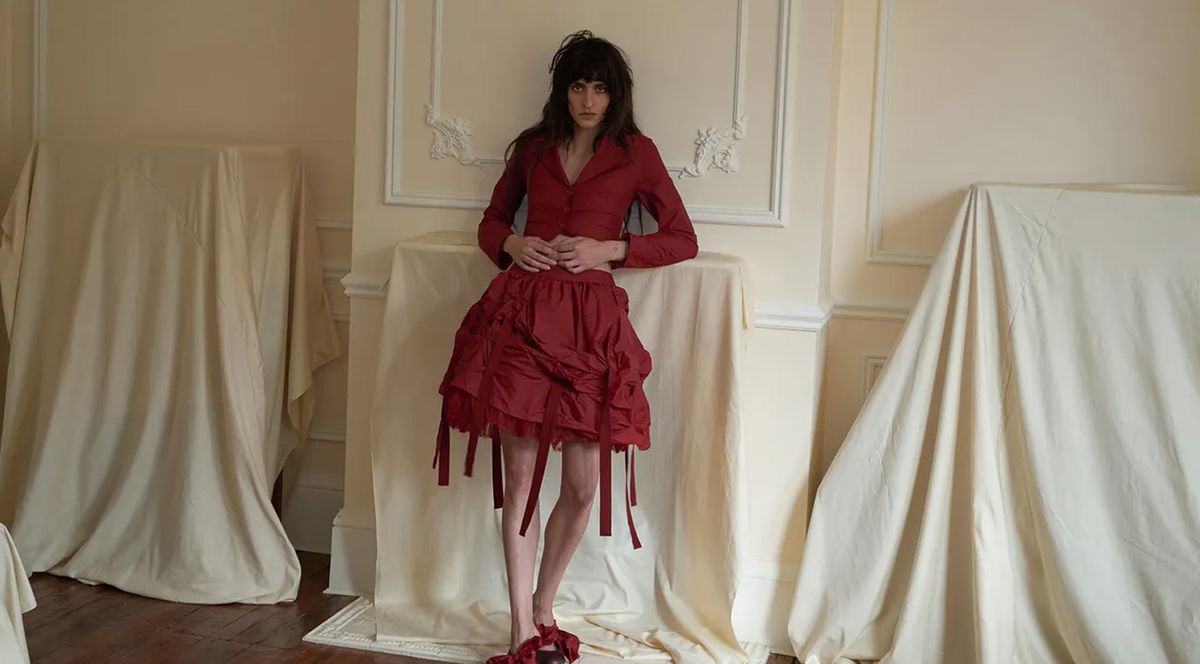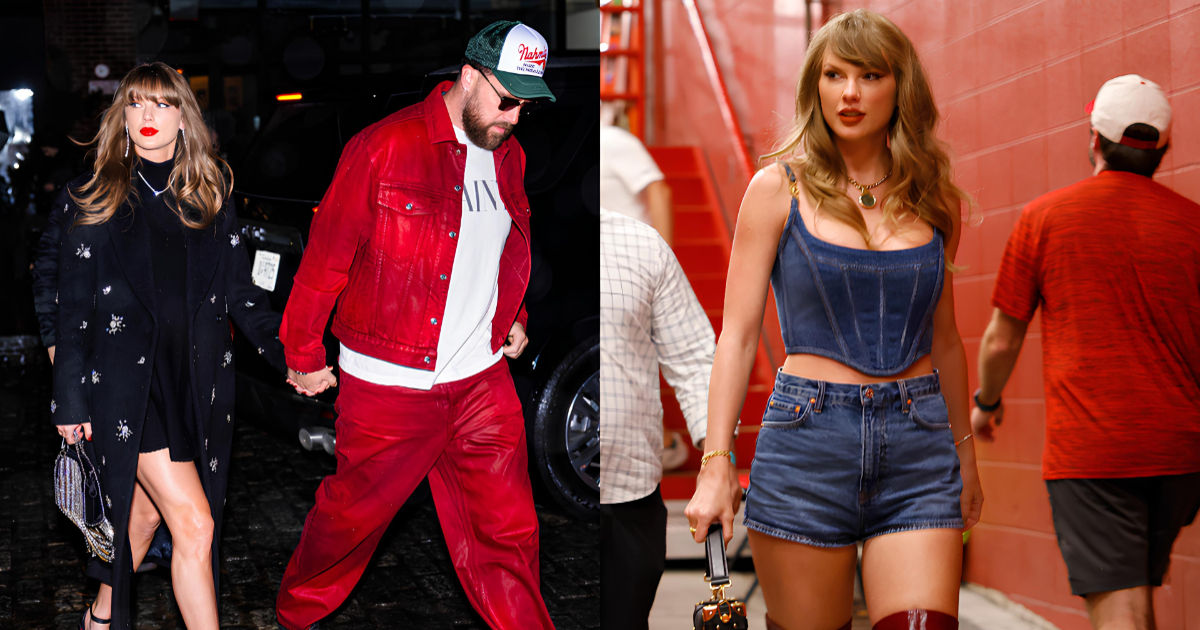If it’s true that you can see the approaching of a revolution in clothes, then arguably there’s no better place to look than 2024’s breakout brands to predict what might lie ahead in 2025. Beyond the noise of the fashion news cycle, the ever-changing musical chairs at historic houses and the liquefaction of staunch retailers like Matches, in fledgling studios creativity prevailed in the face of it all. There were small wins, big ideas and personal breakthroughs.
Some sought sanctuary amid soaring inflation and political turbulence, like Paolo Carzana, who staged an intimate London Fashion Week debut in his back garden. Others fortified themselves through their communities, such as Willy Chavarria’s resistant portrait of America and Jawara Alleyne’s joyful tribute to Caymanian culture. Many made a case for slowing things down, exploring practices that are kinder to our planet while giving more time to create with purpose. This gust of change was felt in Michael Stewart’s statuesque beaded gowns for Standing Ground, the padded dramatics of Duran Lantink, and the deadstock alchemy of Ellen Hodakova Larsson. At a moment when building a brand from the ground up has never felt like a taller task, above all there seemed to be a deeper focus on what makes it all worth it – a love of craft and a need to put things out in the world.
Here, Wallpaper* looks ahead to the inspiring new forces drawing upon resilience in the face of the unknown, offering up powerful new ideas about not only how to dress, but how to be.
Hodakova
(Image credit: Courtesy of Hodakova)
Imaginative, witty, and technically impressive, Ellen Hodakova Larsson’s clothes are something to behold. If you haven’t heard of her yet, the Stockholm-based designer made history this year as the first Swedish recipient of the prestigious LVMH Prize. Merging the emotional and the practical, the designer draws inspiration from her rural upbringing in Strängnäs, transforming old leather handbags and farmhouse fabrics into works of original new beauty. While using deadstock is by no means a new thing – and increasingly it’s drummed into young brands to be circular from the get-go – Hodakova’s dedication to sustainability and deft execution puts her in a class of her own. Whether transforming thousands of spoons into a dress for Cate Blanchett or weaving vintage leather belts into timelessly elegant handbags, sustainability is an essential part of her world rather than a virtue-signalling afterthought. So much so that the designer has spoken extensively about her dream to build the world’s first fully sustainable fashion house.
Beyond her ethical codes, Larsson’s Paris display in September was a particularly breathtaking example of her talent as a designer. Playfully putting functional materials we often overlook into the spotlight, waves of zips interlocked to become gilded evening gowns, hundreds of pocket watches formed skimpy cocktail dresses, and practical items like leather belts, tea towels, and buttons were manipulated into joyfully surreal forms. Honouring the landscapes of her childhood while making a case for painstaking craft, it was one of those rare shows that reminds us of fashion’s ability to delight us – and even make us dream. ‘My designs are a reflection of my upbringing, where nature and memory intertwine,’ the designer said following the show. ‘Each piece carries the intimacy of familiar landscapes and the materials that once surrounded me.’ Riding on the high of her LVMH win, triumphant S/S 2025 collection, and bespoke commissions for the red carpet, Hodakova Larsson is a force in tune with our current moment – and one to follow closely in 2025.
Available from Ssense and hodakova.com. Follow @hoda_kova.
Dauan Jacari
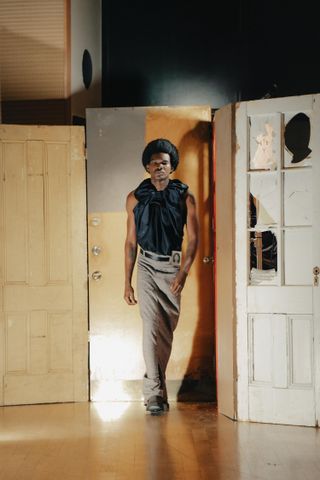
Dauan Jacari ‘Paradise’ collection
(Image credit: Courtesy of Dauan Jacari)
DJ Chappel runs his namesake label from his West Village apartment, where he lives with the brand’s creative director Ryan Cardoso. A trained dancer who studied at Pittsburgh’s Point Park University, Jacari’s references range from African American dance icons like Alvin Ailey and jazz leaders like Bob Fosse, to the poetry of modern ballet and the wild improv of ‘Gaga’ dancing. Creating clothes for the downtown dandy, Jacari’s work explores the relationship between movement and clothing while riffing on codes of masculinity and Black queer culture. He infuses everything he does with a sense of humour, from his ubiquitous ‘spiral boxer skirt’ – a kilt-like piece hewn from underwear material, which has been worn by Lil Wayne, Arca and Shygirl – to the brand’s sharp and funny visual world, where campaigns mimicking the glamour of 1990s billboards are emblazoned with slogans like, ‘Clothes made for men with taste’.
With such a tiny operation of two, Jacari has been building his brand slowly with Ryan over the past six years; however, 2024 felt like their momentous arrival. Staged in an LGBTQ+ centre in New York, the designer’s debut show Paradise was a culmination of these years of toil – a display which imagined an unrestrained utopian world where Black men can express themselves freely. ‘The debut of our menswear collection and seeing everyone attend wearing their Spiral Boxer Skirt was a standout moment,’ he tells Wallpaper*. Beyond the much-loved skirt, the collection brought together sexy scooped and scrunched jersey, halterneck dresses, and low-slung denim. Looking forward to next year, the designer and Ryan are hoping to expand their universe, but first, they want to find a workspace that isn’t where they sleep. ‘In 2025, we want to get a studio and build the strongest team in the world,’ they say.
Available from dauanjacari.com. Follow @dauanjacari.
Renaissance Renaissance
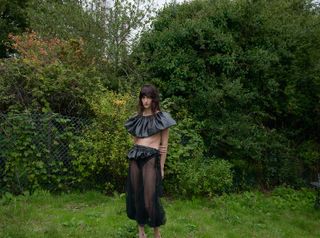
Renaissance Renaissance S/S 2025
(Image credit: Courtesy of Renaissance Renaissance)
Cynthia Merhej’s clothes aren’t just beautiful, they are woven with deeply personal stories. A third-generation couturier, the Lebanese designer has drawn upon her Middle Eastern heritage and the strong female figures in her life since founding her brand in 2016. This year has seen the designer take her brand in considered new directions, from designing the ultra-chic costumes for the 2024 remake of Bonjour Tristesse, starring Chloe Sevigny, to a powerful S/S 2025 offering that reflected upon the ongoing conflict in Gaza and Lebanon. Shown in her Beirut apartment, Merhej used parachutes as the starting point for a collection that worked into themes of freedom and lightness, playing with volume and form through beautifully-cut cotton gabardine and nylon tulle. In development, these billowing shapes in black, military greens, and deep reds started to resemble Irving Penn’s painterly studies of poppies. Fittingly, poppies were a symbol of Palestinians in the 1970s.
‘Narrative plays a big role in my design language, building the world of a character as she evolves through the seasons,’ Merhej tells Wallpaper*. ‘The core principles of our brand are duality and collaboration, juxtaposing innovation and playfulness with the traditions and quality of artisan workmanship.’ Looking forward to 2025, she’s keen to build upon her experimental and poetic core values, creating delicate clothes that are fortified with a strength found in creative resistance. ‘What really keeps me going is that this job really is fulfilling for me. It allows me to tap into all aspects of my creativity and to collaborate with amazing people, so I can’t imagine doing anything else. I’m so excited to continue with the collaborators I work with to put out more beauty and sincerity in a world that so desperately needs it right now.’
Available from Ssense. Follow @renaissance_renaissance.
Av Vattev
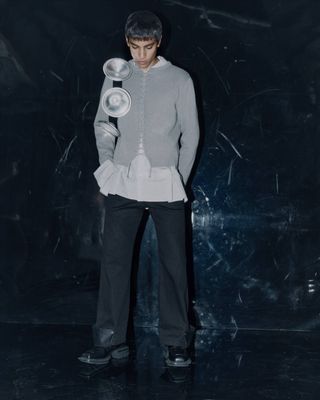
(Image credit: Courtesy of Av Vattev)
Charli XCX and Troye Sivan’s Sweat tour was the hottest ticket of 2024. In full hyper-pop hyperdrive, the pair tore the roof off arenas around the world, wearing a skin-baring wardrobe that was primarily crafted by rising London talent. One of these designers was Antonio Vattev, who aptly has drawn inspiration from a love of music since founding his namesake label in 2020. Radiating with a kind of star power reminiscent of icons like Lou Reed or Mick Jagger, Vattev aims to bring the freedom of the music scenes of the 1970s and 1990s into the present moment. The designer does this by configuring his signature studded, fringed and modish menswear silhouettes in sharp and clever cuts, adding twists of individuality that make each piece feel special – from a graphic criss-cross pattern stitched into tweed to the louche spangling of trousers fit for a rockstar.
Previously working in-house at Saint Laurent, this year Vattev really established himself as a designer in his own lane, taking up a residency at the Sarabande, honing his design identity in chic new collections while finding time to dress stars like Paul Mescal. ‘This year has been a transformative journey filled with incredible opportunities,’ the designer tells Wallpaper. ‘In 2025, I aim to build on the momentum we’ve created by expanding collaborations with artists, musicians, and brands, further bridging the worlds of fashion and culture and growing our community. Ultimately, my goal is for Av Vattev to continue inspiring, empowering, and resonating – solidifying its place as a voice in modern fashion storytelling.’
Available from Farfetch and avvattev.com. Follow @avvattev.
Gabe Gordon
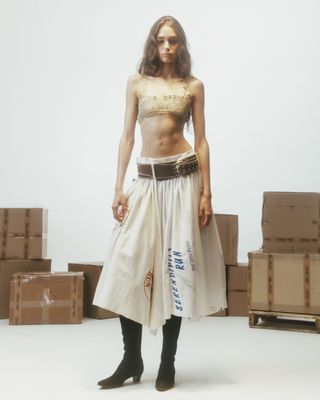
(Image credit: Courtesy of Gabe Gordon)
New Yorker Gabe Gordon has always used his work as a way of making sense of difficult feelings. Founding his namesake label in 2019, his first designs worked through the experience of grief in the wake of losing his father. As his brand has evolved, he’s approached every collection as its own nostalgic world, where anxiety, loss and adrenaline are woven into pieces that reflect upon the passage of time. With a background in textile development, for Gordon it’s important these stories start with the fabrics themselves, which he painstakingly knits, hand-dyes and distresses in slow processes that explore ideas of decay. Gordon then uses these unique materials to play with tropes of Americana, in particular referencing his suburban upbringing and clothes his parents would have worn as high schoolers, often twisting these themes through a queer perspective.
A pivotal point of Gordon’s year was his runway debut in New York, an off-schedule display that presented a ‘teenage fantasy’ of a 1980s horseback riding competition. ‘I was, unfortunately, a theatrekid in high school, and the same excitement of performance materialised,’ he jokes of the ‘Horseplay’ collection, which gave equestrian daydreams a dystopian treatment through skewiff body-hugging knits, artisanal leather pieces and distorted Midwestern-esque jerseys. ‘I felt incredibly proud to see my largest body of work in this new format, surrounded by family and friends and customers of the brand.’ While fantasy is a huge part of his work, the designer doesn’t shy away from the reality of being a young designer today. ‘Times are really difficult and sometimes I can feel pessimistic about what I’m doing,’ he says. ‘That being said, it’s an exciting challenge and I look forward to figuring out ways to keep growing. I can’t wait to continue designing in 2025. I have been collaborating with designer Timothy Gibbons, and we have been scheming new possibilities of wovens becoming included in the work.’
Available from Ssense and gabe-gordon.com. Follow @gabe.gordon.
Ponte
Ponte is shrouded in a veil of mystery. Go on the brand’s website and you’ll find it’s under construction, and you’ll not glean much else from its Instagram, either. Posts that rarely bear a caption in the first place appear and disappear in the blink of an eye, while comments read things such as, ‘Who can I get in touch with for samples?’ and, ‘I’ve DM’d you, please reply!’ The elusive part-art project, part-fashion label is, for those informed, led by Yorkshire-born Harry Pontefract. The designer was one of the most written-about Central Saint Martins MA alumni in 2016, producing a collection that played with ideas of eroticism and memory made from his mum’s tights and found objects. He was snapped up by Jonathan Anderson to design in-house at Loewe – a position he left the security of in 2022 to go out on his own.
Right from the start, Pontefract has rejected almost every traditional mode of building a brand. His collections aren’t seasonal, arriving instead in the form of ‘series’, and his pieces range from wearable wonky football shirts to precious one-off textile sculptures that could hang – and have been displayed, for the Paris debut of his second series – in a gallery. With his ongoing project, the designer is interested in exploring the forgotten stories held in found objects and the subjectivity of clothing; how one person might find a fabric cosy and another person find it repelling. Playing with archetypes associated with things like eveningwear and uniforms, while experimenting with form and divisive textures like shearling and PVC, the designer asks questions about how our collective histories and the ways clothes can communicate, or conceal, our inner selves. It’s impossible to predict what direction he’ll take things in 2025, but whether it’s a collection, exhibition or collaboration, Pontefract is bound to surprise us.
Follow @__ponte___.
Giovanna Flores
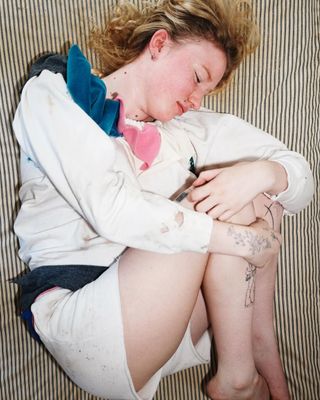
Giovanna Flores ‘Series 12’
(Image credit: Courtesy of Giovanna Flores)
Giovanna Flores describes her design language as ‘scrappy’ – a vibe brought to her world not only by a resourceful use of off-cuts, deadstock materials and vintage items, but also through a DIY grit grown from nurturing her own business in New York. Flores is one of those ‘if you know, you know’ names in the city’s fashion scene who has kept things relatively low-key since founding in 2019, and like many other creatives in the city, she has built her brand alongside working a full-time job. Celebrating the natural curves of the female body, her charmingly deconstructed looks are a favourite of stylists like Dara Allen and celebrities like Chloe Sevigny and Addison Rae, though the designer maintains an invitingly homespun aesthetic online. Blending iPhone shots of quirky pieces hanging on the back of bedroom doors with imagery of street-cast models in nature, her brand feels refreshingly slowed down in an industry that seems to move at lightning speed – almost like a place where you can stop and take a breath for a moment.
This year, alongside two seasonal collections, she set up her own webstore, having previously made pieces to order. ‘These things were big pushes for me as I work alone in between my full-time work,’ she says. ‘I am very grateful to all of my friends and collaborators. This year I have really felt supported in a way that I never have in the past, and I’m so thankful.’ Looking forward to next year, she’s keen to keep expanding her world, but she’s not in any huge rush. ‘I really love the work and am very energised by it,’ she says. ‘In the last couple of years, I have been trying to show more and make more things available to purchase. Right now I’m just trying to find a pace that feels sustainable.’
Available from shop.giovannaflores.com. Follow @giovannaflor3s.
Lii
Zane Li’s confident designs belie his young years. Born in Chongqing, China, the New York-based 24-year-old launched his brand straight out of his studies at FIT last year, and has already generated an air of excitement around his brand. Proposing a modern idea of elegance, his work takes on an almost architectural quality, balancing bold yet simple colour palettes and dramatic sweeping shapes that celebrate the body in surprising ways. Slip dresses float in geometric formations in front of the body; sculptural sleeves cocoon around arms; and slivers of skin peep out of beautifully boxy silhouettes. These are clothes that are interesting and strong, but are also made for everyday life, as evidenced by a considered launch on the designer’s web store, where grown-up takes on T-shirts, sweatshirts, button-ups, and leather jackets have recently been made available to shop. With only two collections under his belt, Li has already established himself as a shrewd creative mind with something to say, laying down a manifesto for contemporary elegance that truly feels fresh and entirely his own.
Available from Ssense and lii-studio.com. Follow @l__i_i.

